
¿QUÉ ES UNA ALMAZARA?
El proceso de elaboración del aceite de oliva virgen extra no se entiende sin las almazaras. Te explicamos todos los detalles acerca de estos lugares
La almazara
Como ya veníamos adelantando, el proceso de creación del aceite de oliva virgen extra no se entiende sin la figura de la almazara. Por ello, te vamos a explicar en detalle en qué consiste este término, cómo han evolucionado las almazaras con el paso del tiempo, qué tipos existen en España y cuáles son las comunidades autónomas con un mayor número.
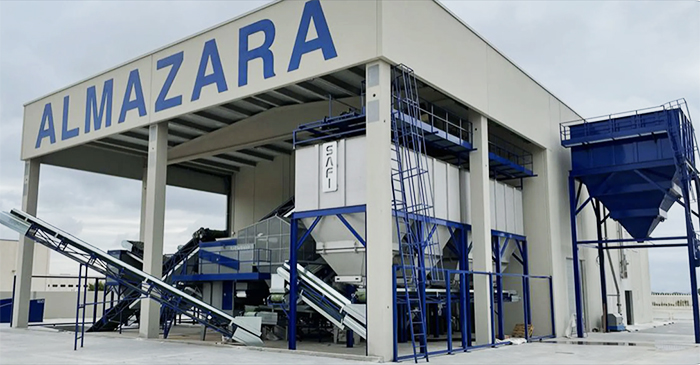
Origen y evolución de las almazaras
La palabra almazara proviene del árabe y significa “lugar donde se exprime”. Por su parte, la Real Academia Española (RAE) define el término almazara como “molino de aceite”.
Las almazaras cuentan con siglos de historia. Juan Vilar, profesor de la Universidad de Jaén y miembro del Centro de Estudios Avanzados en Olivar y Aceite de Oliva, sostiene que existen investigaciones que remontan el origen de las almazaras a la Edad de Cobre —entre los años 6000 a.C. y el 4000 a.C.—.
Ya en esa época lograron crear una especie de máquina de más de dos metros de altura a base de piedra, que en apariencia recordaba a un mortero. A través de su uso podían moler las aceitunas y producir el aceite de oliva en pequeñas cantidades. Así pues, el surgimiento económico de estas civilizaciones capaces de producir aceite de oliva, sumado a su ímpetu por exportar y comerciar con los puertos, hizo que, de forma paulatina, se fuera formalizando el uso de este alimento.
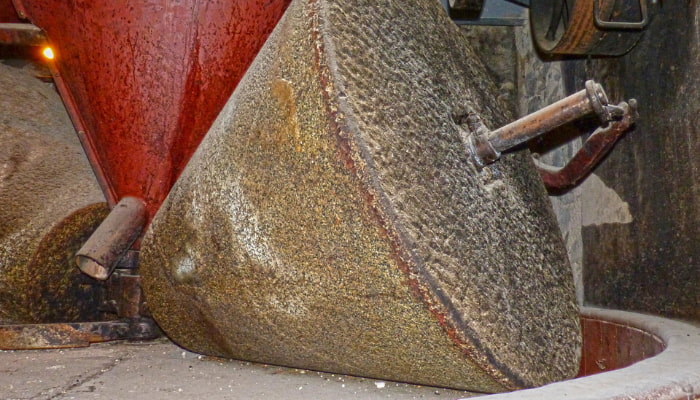
No obstante, el investigador Vilar manifiesta que la primera almazara industrial de la que se tiene constancia data en torno al siglo VI a.C., en Clazomene, una remota ciudad portuaria de la Antigua Grecia.
Aquellas almazaras eran más parecidas a las actuales, pero también guardaban notables diferencias. En dichas almazaras había un tornillo grande sujetando las palancas que ejercían presión sobre las aceitunas, permitiendo así la elaboración de lo que hoy en día se conoce como aceite de oliva virgen extra.
Las almazaras llegaron a ser tan relevantes en la sociedad de la época que incluso decidieron situarlas en la parte central o principal de cada localidad, con el objetivo de que la distribución del aceite de oliva fuera más sencilla de controlar y estuviera en un lugar más visible.
Las almazaras en la actualidad: distribución y funcionamiento
La evolución de las almazaras se desarrolló en paralelo con la capacidad de producción agrícola, es decir, cuantas más aceitunas eran cultivadas mayor era también la necesidad de contar con almazaras más productivas.
En la actualidad, el concepto que se tiene de almazara es el de aquel lugar en el que se procesa la aceituna para la elaboración del aceite de oliva virgen extra.
Una almazara está formada por diversas zonas en las que se llevan a cabo las distintas etapas o fases del proceso de elaboración del aceite, desde la recogida de la aceituna hasta su almacenamiento en la bodega. En concreto, la almazara suele contar con cuatro espacios diferenciados:
Patio de recepción
Es la zona por donde llegan las aceitunas tras haber sido recolectadas y posteriormente transportadas. En función del volumen de producción, este lugar será más amplio o más reducido.
Generalmente, en el patio de recepción encontraremos algunos elementos clave como las tolvas —recipientes donde se depositan las aceitunas—, las pesadoras —máquinas donde se pesan los kilos de fruto—, las cintas transportadoras —artificios por los que se introducen las aceitunas dentro de la almazara propiamente dicha—, las lavadoras o despalilladoras —máquinas que se encargan de dejar las aceitunas perfectamente limpias antes de pasar al molino— o el molino —lugar donde finalmente comienza el proceso de extracción del aceite de oliva virgen extra—.
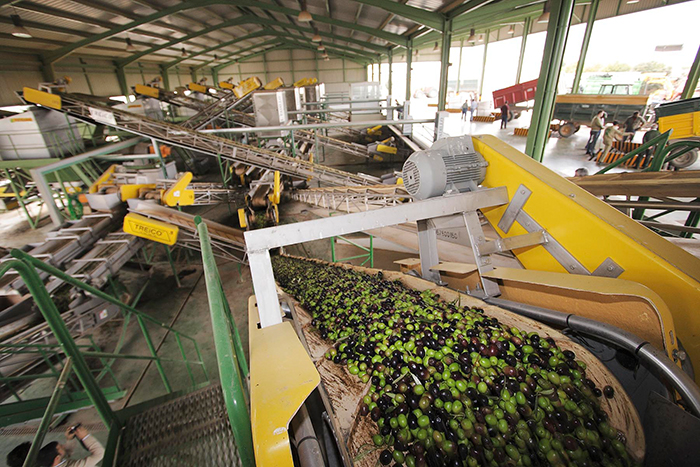
Almazara
En el interior de la almazara propiamente dicha, la pasta de aceitunas que sale del molino pasa por tres zonas: la batidora —donde se amasa—, el decanter —donde se extrae el aceite— y la centrífuga vertical —donde se retira cualquier tipo de partícula que haya podido quedar—.
Tras pasar por estas tres zonas, el aceite de oliva virgen extra ya estaría listo para ir primero a los decantadores y, por último, a bodega.
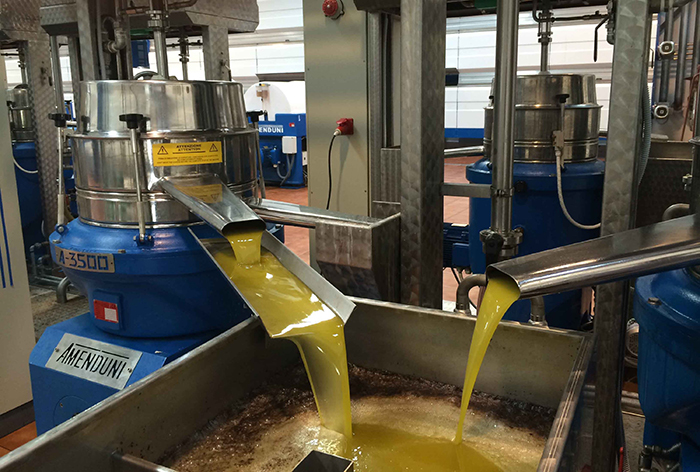
Bodega
En esta zona de la almazara es donde se almacena el aceite de oliva, siempre con la debida clasificación dependiendo de su origen y sus propiedades. La temperatura de este espacio y los materiales con los que está en contacto el aceite son dos aspectos que deben cuidarse al milímetro para lograr la conservación de su aroma y características.
Precisamente por ello es tan importante que la bodega, así como todos los depósitos que contengan el aceite, gocen de un correcto aislamiento por los posibles cambios de temperatura que puedan darse en el exterior.
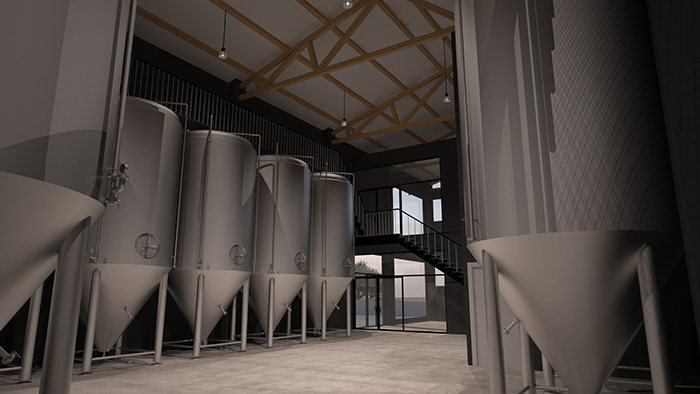
Zona de envasado
Por último, para que el aceite de oliva virgen extra pueda ser comercializado, deberá transitar del depósito al envase final. Generalmente el envase consiste en botellas o garrafas —de cristal o de plástico— cuyo etiquetado se suele añadir en esta misma fase del proceso.
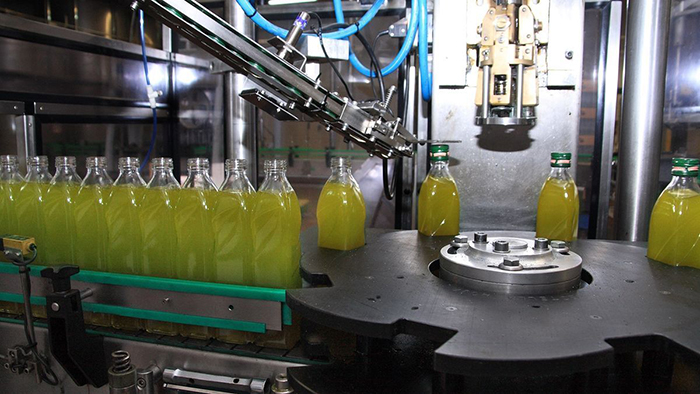
Tipos de almazaras
Dependiendo del sistema de molienda y extracción, las almazaras se pueden clasificar o diferenciar en los siguientes tipos:
Tradicional
Para la molienda de las aceitunas utiliza el empiedro: conos de piedra —normalmente de granito— giran mediante un sistema de ejes y engranajes sobre una base del mismo material para obtener la trituración del fruto. Las almazaras tradicionales suponen el 14% del total de almazaras registradas en España, pero tan solo generan el 1,16% de la producción total. Actualmente se encuentran en fase de desaparición.
De 3 fases
Se sustituye el sistema de molienda por medio de molinos mecánicos. Una vez trituradas las aceitunas, la masa resultante es calentada y batida en termobatidoras para facilitar la extracción de aceite de oliva, realizada posteriormente mediante centrifugación. Como resultado se obtiene aceite de oliva virgen, orujo seco —el producto compuesto por el extracto seco de la aceituna— y alpechín —la mezcla del agua que es usada para lavar las aceitunas, así como el agua que las propias aceitunas tienen—. Estas almazaras representan el 9% del total de nuestro país y originan el 3,18% de la producción total española.
De 2 fases
Se trata del sistema más moderno y que únicamente produce aceite y alperujo —un concentrado que se compone de los distintos restos que quedan de la aceituna tras haberle extraído el aceite—. Este tipo de almazaras suponen el 72% de las presentes en España y obtienen el 90,10% del total de aceite producido.
Mixtas
Utilizan dos o más de los sistemas explicados anteriormente. Este tipo de almazaras constituyen el 5% del total en España y representan el 5,55% de la producción nacional.
A su vez, dependiendo del tipo de organización societaria, en España las almazaras se distribuyen en dos grandes grupos muy parejos en lo que a cifras se refiere —según datos extraídos del Informe Mensual de la Situación de Mercado del Sector del Aceite de Oliva y la Aceituna de Mesa, publicado en diciembre de 2021—:
Almazaras cooperativas
Este modelo de almazara es el resultado de la unión de varios socios que tienen como objetivo la creación de una cooperativa para moler sus aceitunas y elaborar su propio aceite de oliva.
Actualmente suponen un 60% de la producción nacional y hay registradas un total de 907 (50,03%) en el país.
Almazaras industriales
Las almazaras de tipo industrial agrupan a los fabricantes industriales de aceite de oliva. Pueden ser S.A. —Sociedad Anónima o también conocida como empresa anónima— o S.L. —una sociedad de responsabilidad limitada o sociedad limitada—.
Hoy en día producen un 40% del aceite de oliva y en España hay registradas un total de 906 (49,97%).
Andalucía, la comunidad líder en número de almazaras
El olivar abarca 2,75 millones de hectáreas en España, de las cuales 2,55 millones pertenecen a olivar de almazara —el 93% del total—. Asimismo, nuestro país es el primer exportador mundial de aceite de oliva, y sus exportaciones suponen en torno al 65% de su comercialización total.
Como líder mundial en producción de aceite, España dispone de un importante número de almazaras distribuidas por todo el territorio. Según datos publicados en enero de 2022 por el Ministerio de Agricultura, Pesca y Alimentación, hay registradas un total de 1.848 almazaras en territorio español.
Tal y como muestran los datos, 14 de las 17 comunidades autónomas españolas cuentan con almazaras autorizadas, lo que significa que tienen olivos muy cerca de ellas. Pos su parte, solo 3 comunidades no poseen almazaras oficialmente: Asturias, Cantabria y las Islas Canarias.
Actualmente, Andalucía tiene registradas un total de 865 almazaras, lo que supone el 46,8% de todas las presentes en el país. De esas 865, 330 se sitúan en Jaén (38,15%), 192 se encuentran en Córdoba (22,19%) y 110 en Granada (12,71%).
En este artículo hemos podido aprender qué es una almazara, así como el papel fundamental que juega en la producción del aceite de oliva virgen extra.





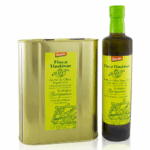

No Comments